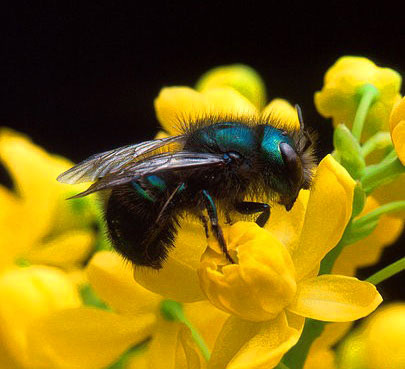“In recent years, concerns have mounted over the environmental impacts of pollinator decline, giving rise to focused conservation efforts by average families to protect, enhance, and foster agricultural pollination through beekeeping.
Keeping native non-stinging mason bees — even in urban spaces — is a surprisingly easy way to help the environment, and it’s also an inexpensive and educational project for kids. The best news is that these hyper-efficient air pollinators will do wonders for your fruit crops and gardens!
In North America, there are about 140 different mason bee species — with about 200 species worldwide. Osmia Lignaria, referred to as the orchard mason bee or blue orchard bee, is the most common species found in the Pacific Northwest. Known for being great pollinators, orchard bees look very similar to common house flies — with black bodies and a dark blue iridescent sheen…”

